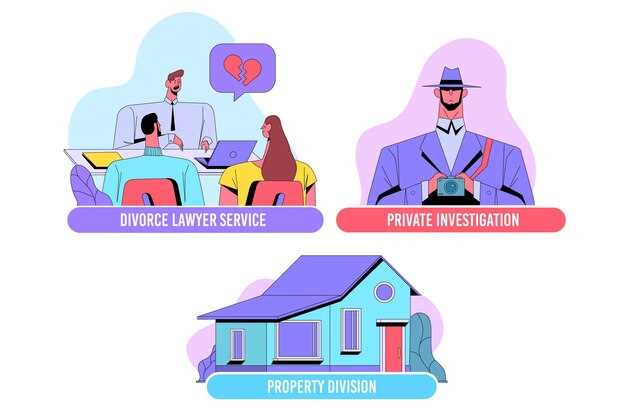
When it comes to auto insurance, choosing the right type of coverage is crucial for maintaining financial security on the road. Two common options that often confuse drivers are liability coverage and full coverage. Each of these insurance types serves a distinct purpose and provides varying levels of protection, making it essential for car owners to understand their key differences.
Liability coverage is the most basic form of car insurance, designed to protect the insured from the financial repercussions of causing an accident. It covers the costs associated with injuries and property damage incurred by the other party in an accident where the insured is at fault. This type of coverage is often mandated by law in many states, ensuring that drivers are held accountable for their actions on the road.
On the other hand, full coverage encompasses a broader range of protections, including liability, collision, and comprehensive coverage. This means that not only are you protected against damages you cause to others, but you also receive compensation for damages to your own vehicle, regardless of fault. Understanding these differences is vital for making informed decisions about your insurance needs and ensuring adequate protection in any driving situation.
Liability vs Full Coverage: Understanding Key Differences
When it comes to auto insurance, understanding the differences between liability and full coverage is essential for making informed decisions. Liability coverage is often the minimum required by law and primarily protects other parties in the event of an accident where you are at fault. It covers damages to another person’s vehicle and medical expenses resulting from the accident. However, it does not provide any protection for your own vehicle or medical bills.
In contrast, full coverage includes liability coverage along with additional protections such as collision and comprehensive insurance. Collision coverage pays for damages to your own vehicle resulting from an accident, regardless of fault. Comprehensive coverage offers protection against non-collision-related incidents, including theft, vandalism, or natural disasters. Therefore, full coverage provides a broader range of protection, ensuring that you are covered in various situations that could lead to financial loss.
Choosing between liability and full coverage often depends on individual circumstances, such as the age and value of your vehicle, driving habits, and financial situation. While liability coverage is typically more affordable, it may leave you vulnerable to significant out-of-pocket expenses in the event of an accident. Full coverage, while more expensive, offers peace of mind and financial security, especially for newer or high-value vehicles.
Ultimately, understanding the key differences between liability and full coverage can help you select the type of insurance that best fits your needs and budget. It’s important to carefully evaluate your options and consider both present and future risks before making a decision.
What Does Liability Coverage Include?

Liability coverage is a fundamental component of car insurance, designed to protect you financially if you cause an accident that injures another person or damages their property. This type of coverage typically includes two primary categories: bodily injury liability and property damage liability.
Bodily injury liability covers medical expenses, lost wages, and other related costs for individuals injured in an accident where you are at fault. This coverage is essential for ensuring that injured parties receive the care they need without imposing a significant financial burden on you.
Property damage liability addresses any damage to vehicles or other property that may result from an accident you cause. This includes repairs to other vehicles and compensation for damaged structures, such as fences or buildings. Both forms of liability coverage work in tandem to provide a broad level of protection in the event of an accident.
It is important to note that while liability coverage is a requirement in most states, it does not cover your own vehicle or injuries sustained by you or your passengers. For those protections, you would need full coverage, which includes comprehensive and collision insurance. In summary, liability coverage is designed to protect others and their property, ensuring you are financially responsible when causing an accident.
What Is Considered Full Coverage Insurance?
Full coverage insurance typically refers to a combination of different types of auto insurance policies that offer comprehensive protection for vehicle owners. It is essential to understand that “full coverage” is not a specific type of insurance but rather a blend of various coverages designed to protect the insured from financial losses resulting from accidents, theft, or other unexpected events.
Generally, full coverage includes three primary components: liability insurance, collision coverage, and comprehensive coverage. Liability insurance covers damages to other parties if you are at fault in an accident, ensuring that any injuries or property damage are compensated. Collision coverage pays for damages to your own vehicle resulting from collisions with other vehicles or objects, regardless of who is at fault. Lastly, comprehensive coverage protects against non-collision-related incidents, such as theft, vandalism, or natural disasters.
It is important to note that while full coverage provides extensive protection, it does not cover every possible scenario. For example, factors like personal injury protection or uninsured/underinsured motorist coverage may be necessary for complete financial security. Therefore, when considering full coverage insurance, evaluate your individual needs and the potential risks associated with driving in your area.
Additionally, the specific inclusions and limits can vary between insurance providers, which means it is crucial to read the policy details carefully. Understanding the nuances will help ensure you choose adequate coverage that aligns with your financial situation and driving habits.
How to Choose Between Liability and Full Coverage?

Selecting between liability and full coverage insurance is crucial for vehicle owners, and it involves several factors that should be carefully considered.
Here are some key points to help you make an informed decision:
- Assess Your Vehicle’s Value: If you own a high-value or new vehicle, full coverage may be more beneficial. This type of policy protects your investment against damages from accidents, theft, or natural disasters.
- Consider Your Financial Situation: Evaluate your ability to cover repair costs out-of-pocket. If a significant financial burden would arise from a wreck, full coverage can provide peace of mind.
- Evaluate Driving Habits: If you frequently drive in busy areas or on highways, the risk of accidents increases. In such cases, full coverage may be a safer option to protect yourself.
- State Requirements: Understand your state’s minimum insurance requirements. Some regions only mandate liability insurance, but you may choose full coverage for personal security.
- Consider Your Risk Tolerance: Your comfort level with potential risks should influence your choice. If you prefer comprehensive protection, full coverage is recommended.
- Age and Driving Experience: New drivers typically face higher risk rates. Full coverage can be a wise choice to ensure protection against unforeseen incidents.
- Potential Discounts: Research available discounts. Some insurance companies offer lower rates for full coverage policies, making them more financially attractive.
Ultimately, the choice between liability and full coverage should reflect your individual circumstances, preferences, and priorities. Take the time to evaluate each option thoroughly to make the best decision for your needs.